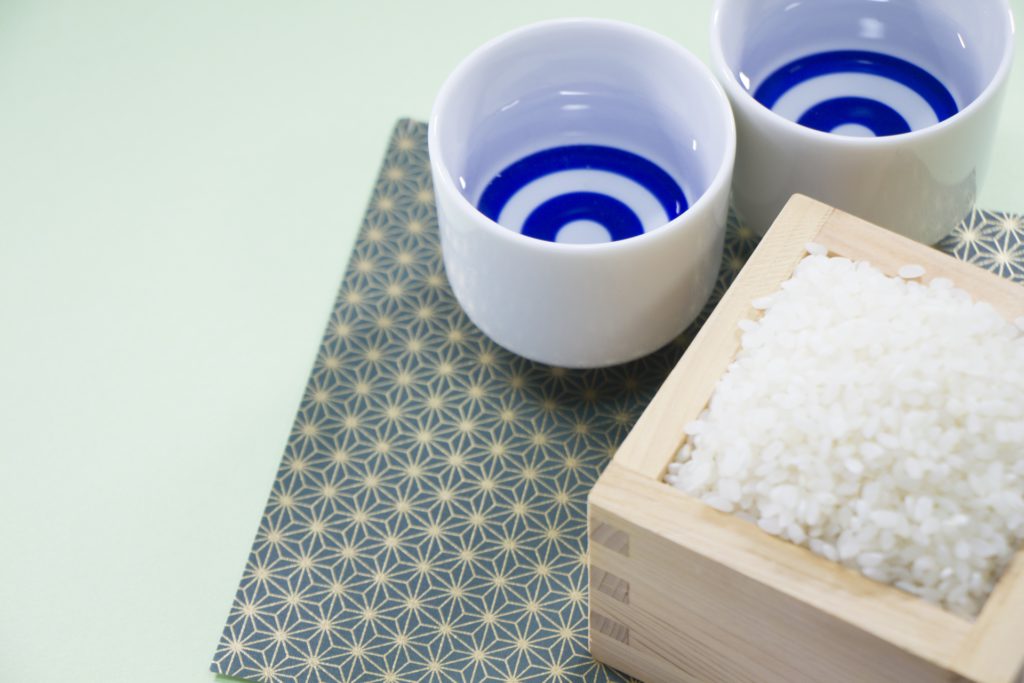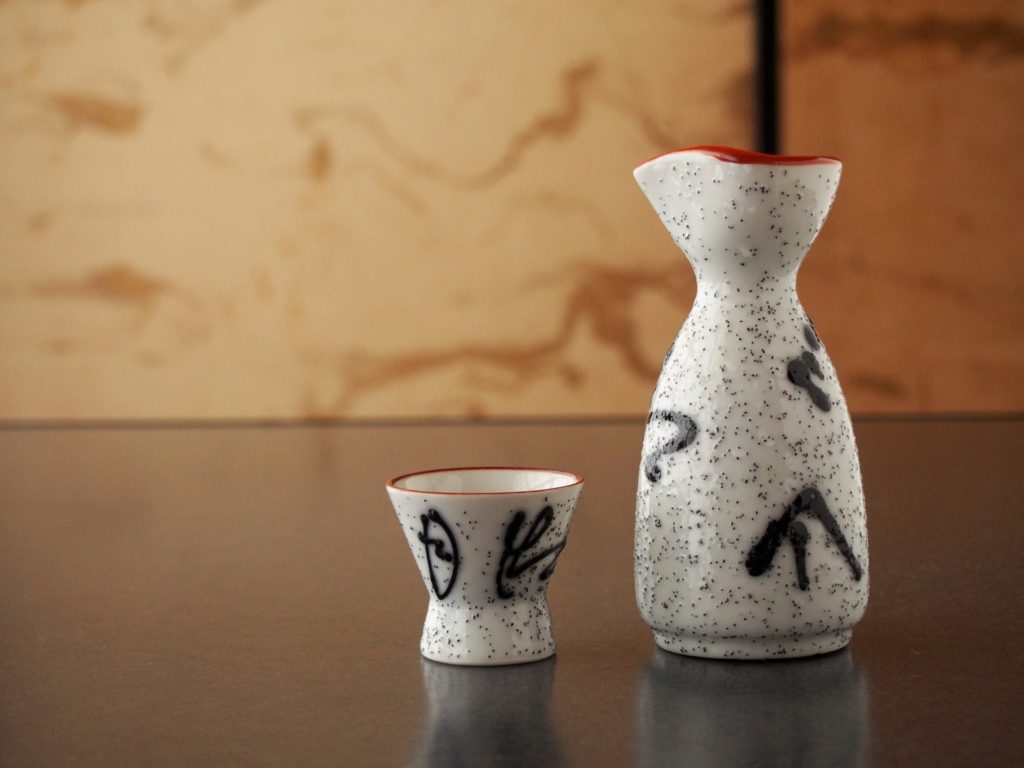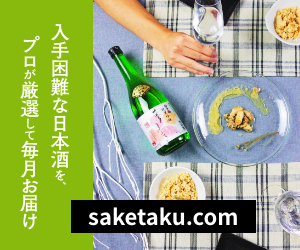- Home
- [Beginning of Sake] - Let's learn more about Sake!
- 4. The taste of Sake is determined by 8 elements! Explanation of knowledge to become common!
4. The taste of Sake is determined by 8 elements! Explanation of knowledge to become common!
- 2020/11/29
- Write comment

In the previous article, “The taste of sake can be divided into 4 types!”, we talked about the taste of sake being divided into four types: “Kunshu”, “Soshu”, “Junshu”, and “Junshu”.
In this article, based on those four types, I would like to talk about the “Taste” of individual sake.
The simple representation of the taste of sake is the expression “sweet” or “dry”.
These expressions are listed on the menu and sake labels when ordering sake at the shops or restaurants.
As I wrote in the previous article, “sweet” and “dry” in alcohol have a different meaning from that of food.
Sweetness does not mean “something with a sweetness”, but “something with a high sugar content or a weak alcohol stimulus”.
In addition, dry is not “strong spices or strong salty”, but “low sugar or strong alcohol stimuli”.
This sweet and dry taste is called “sweet and dry”, a typical term that expresses the taste of sake”.
The taste of sake is also expressed in a variety of other terms, such as “attack”, “”texture”, and “lingering”.
Therefore, this time we will focus on “taste” in order to enable you to taste sake more deeply.
Learn more about the detailed tastes unique to sake and enjoy a little ventilation!
Contents
The taste of sake is determined by eight factors

In a text titled “MOTOI of NIHONSHU” (NPO FBO, 2018), written by SSI, which is textbook of “Kikisakeshi(sake sommelier)”, the taste of sake is evaluated mainly by the following eight factors.
[Taste Evaluation Criteria]
| Evaluation factor | Content |
| Soundness | Whether the taste has deteriorated |
| Attack | Impression and sense of mouth inclusion |
| Texture | Image of the drinking spout |
| Specific taste | Distinctive elements centering on umami |
| Sweetness | Degree of sweet or dry |
| Inclusive scent | Developmental property of fragrance in the mouth |
| Afterrhyme | Length of taste remaining |
| Complexity | Taste considering all the above factors |
Basically, a word expressing sake falls under any of the above 8 factors.
For example, “sweet” or “dry” represent “sweetness”, and “light” or “thick” represent Specific taste.
SSI evaluates the taste of sake based on these evaluation criteria.
Accordingly, this time I will explain what the taste of sake consists of through these eight evaluation criteria.
1. Evaluate the taste of sake in terms of “soundness”
The degree of soundness is an evaluation factor for determining whether or not quality deteriorates, and is evaluated as “healthy” or “unhealthy”.
However, it is difficult to evaluate the soundness with taste.
Sake has a expiration date.
However, just because the expiration date has passed does not mean that the taste will be severely degraded.
Therefore, when you look at the soundness of your taste, you need to think about the appearance (color) and the flavor together.
For example, to evaluate the soundness of appearance, look at the color of sake itself.
It is evaluated as healthy if it is clear without turbidity, and unhealthy if it is turbid and discolored.
The appearance may change whitish if the sake itself is mold-bearing.
When stored at high temperatures for a long period of time, the scent may have a distinctive scent called “Hineka” in Japanese.
In this way, when judging the soundness of sake, we evaluate both the appearance and aroma of sake.
Incidentally, sake hardly deteriorates unless it is opened.
Mold growth is not caused by deterioration but by bacteria contaminated when the plug is opened.
Also, “Hineka” is the scent that appears when the haigh temperature continues.
The soundness of sake is rarely significantly impaired if stored in an appropriate manner.
2. Evaluate the taste of sake with “Attack”
Attack is the strength and weakness of the impression or sensation just when you put it in your mouth.
We evaluate sake as “weak”, “moderately weak”, “moderately moderate”, “moderately strong” or “strong”.
Basically, refreshing, easy-to-drink alcohol is less attacking.
On the other hand, it can be said that alcoholic and sour alcoholic beverages have strong attacks.
The strength of the attack depends on the actual sake.
Check it when tasting.
It is important to have the first impression when drinking attacks.
3. Evaluate the taste of sake with “texture”
Texture refers to the feel of sake.
We evaluate sake with words such as “soft,” “hard,” “coarse scratch,” or “fine scratch.”
“Texture” is derived from “Texo”.
The word “Texo” is used to describe the texture and texture of objects in Latin and “weaving” or “knitting”.
In texture, sake is evaluated by “soft”, “hard”, “coarse” and “fine-cut”.
The texture changes significantly over time.
In general, aging over time causes the texture to become more gradual.
However, the scientific rationale for aging is unknown.
In addition, when various ingredients are added over time, not only the appearance and scent but also the texture changes.
4. Evaluate the taste of sake with “specific taste”
Specific taste means as it is, but it is the specific taste of that alcoholic beverage and the characteristics of its flavor.
A little further, the term “taste” refers to which of the basic taste sensations such as “umami,” “sweetness,” “pungency,” “sourness,” “bitterness,” and “astringency” are felt.
Sometimes more than one sense of taste can be felt at the same time, as well as one.
From a different point of view, it can be said to be an evaluation of the strength, weakness, and comfort of the taste.
In the case of sake, “umami” among these is especially important.
I personally believe that determining the strength and weakness of this flavor and whether it is good or bad will help convey the flavor of sake.
If you understand the characteristics of taste when drinking sake, it is easy to use as a reference when choosing sake of your own choice.
The following explains in more detail the 6 typical flavors.
It’s a bit long, and there’s also a lot of professional talk.
If you’re not good at that, or if you want to grasp the basics first, skip the following and proceed to the next “5. Evaluate the taste of sake with “sweetness and spiciness.”
Umami
The flavor of umami is the core of the flavor of sake.
The flavors contained in sake include amino acids and succinic acid.
Above all, about 20 amino acids are said to be contained.
Sake with a lot of umami ingredients is described as “cocky,” “rich,” and “full body”.
The sake with few umami ingredients is expressed as “refreshing,” “pale,” and “light body”.
These tastes are produced by decomposition of the ingredients contained in rice by Aspergillus koji.
Proteins in rice are degraded to amino acids by proteases and peptidases produced by Aspergillus koji.
Sweetness
The sweetening taste of sake is mainly derived from glucose, which is produced by sugaring starch in rice from koji fungus.
When there is a lot of Glucose, its sake becomes cocky and rich, and the mouth of the drink becomes smooth and smooth.
Glucose contains less sweetening ingredients than other sugars.
Therefore, the sweetness of sake is low, and when you compare it with the sweet taste of wine, you feel less sweet.
[Comparison of Sugar Content]
| Sugar content | Representative Liquor | From | Sweetness |
| Fructose | Wine (*) | Fruit | High sweetness (sweet at low temperatures) |
| Sucrose | Rum | Sugarcane | Highly sweet |
| Glucose | Sake | Fruit, saccharified starch | Less sweet |
(※) Not only fructose but also glucose are relatively high.
By the way, wine also contains glucose, but it is sweeter than sake.
The reason for this is that wine contains fructose as well as glucose.
With these two sugars, wine is sweeter than sake.
Pungency
Some of the pungent ingredients are:
• from the action of allylic compounds such as horseradish and pungent, allyl sulfide and allyl isothiocyanate, which are tourniquet in the nose; and
• from pungent ingredients such as capsaicin and piperine, which cause irritation such as heat and pain in the tongue.
However, sake does not contain such pungent ingredients.
Sourness
The sourness of sake includes lactic acid, malic acid, and citric acid.
Lactic acid is produced by lactic acid bacteria, and malic acid and citric acid are produced by yeasts during alcohol fermentation.
[Characteristics of each sourness]
| Name | Included | Features |
| Lactic acid | Fermented foods such as pickles, dairy products | Mild sourness |
| Malic acid | Fruits such as apples | Light sourness |
| Citric acid | Citrus fruits | Slightly bitter sour taste |
| Tartaric acid | Grape and other fruits | Tart sourness |
The label of sake may indicate “acidity” for sourness.
“Acidity” is shown in the range of 1.0 to 2.0, with higher values indicating stronger acidity and lower values indicating weaker acidity.
Basically, high acidity is felt pungent, thick sensation, and low acidity is sweet, light sensation.
The amount of acid contained in sake is about one eighth of white wine.
Distinctive sourness is the characteristic of wine, but it may be said that sake is not.
Bitter taste
The bitter taste of sake is produced during alcohol fermentation.
The bitter taste gives a sharpness, which is a dry factor.
It may also give richness or thickness.
Although it is better to have as little bitterness as possible, it is important to give sharpness to the taste.
By putting a well-balanced bitter taste into each flavor, the taste of sake itself is tightened.
Astringent taste
Basically, sake does not contain astringent taste.
Red wine is a typical alcoholic beverage with a high astringent taste.
Red wine has that unique astringency because it is also brewed using grape skin and seeds containing a bitter ingredient called tannin.
As rice does not have such astringent ingredients, sake does not contain astringency.
However, in the case of sake stored in barrels, astringency may be produced by tannin present in the wood of the barrels.
5. Evaluate the taste of sake by “Sweet or Dry”
Sweetness is an evaluation of the extent to which a sake is sweet or dry.
SSI evaluate sake in a five-point scale for sweet, medium sweet, medium, medium dry, and dry.
The database on this site uses those.
In some cases, “Nihonshudo (the degree of sake)” is used as an indicator of “sweet” or “dry”.
It refers to the weight when sake is compared to the same amount of water.
The higher this Nihonshudo level is, the more “dry” sake, and the lower, the more “sweet” sake is considered.
Don’t you have to be so particular about sweet or dry?
*Attention:
The below is translation of Japanese article.
In Japanese, “sweet” is “Amakuchi”, “dry” is “Karakuchi”. Moreover, in Japanese, “hot” is “Karai”.
To the point, in Japanese, “kara” is used for both “dry” and “hot”.
This often makes the Japanese confused.
I intended to write down the translation of Japanese.
Please keep in mind above and know the difference of taste between you and the Japanese.
“Sweet” or “Dry” of sake mean “high/low sugar content, strong/weak alcohol irritation”.
Alcohol is produced by fermentation of sugar.
Generally, the high sugar content in sake means that the amount of alcohol produced is small, so that the irritation of alcohol is weak.
On the contrary, the low sugar content in the sake means that the amount of alcohol produced is high, which means that the alcohol is strongly irritated.
The “sake level” is a measure for determining the sweet or dry.
Let me explain a little about what this is.
If you compare the weight of the same amount of water and alcohol, the weight of the alcohol will be lighter.
This means that the more “dry” sake is, the lighter.
Conversely, the more “sweet” sake is, the heavier.
“Nihonshudo” refers to the use of this property.
The index is for judging “sweetness” and “dry”.
0 is the degree in which the specific gravity is the same as that of water, sake which the degree is plus, is lighter than water (= more alcohol), and minus is heavier than water (= less alcohol).
However, whether you drink alcohol and feel sweet or dry does not depend only on the amount of alcohol.
The degree of sweet taste cannot be judged by sake alone because it depends on some of the umami ingredient, how the person feels it, and how the person expresses what he/she feels it.
Sake has a sweet taste derived from rice, whether it is sweet or dry.
In addition, sake also has an aftertaste of pungency derived from alcohol.
In addition, sake has a sweet taste centered on umami, compared with other liquors.
Therefore, even dry sake feels sweet, and the judgement of whether it is sweet or dry becomes vague.
Other Kunshu, which has fragrance, tend to be sweetened by their distinctive flavors, whereas Junashu which has rich taste tend to be sweetened by their high umami taste.
Because of this, it is difficult to judge whether it is sweet or dry.
When judging sweet or dry, it is necessary to judge by supplementing with other elements.
If you think about it in this way, maybe it’s better not to be too particular about “sweet” or “dry”.
6. Evaluate the flavor of Japanese sake with “Fukumika (Inclusive scent)”
“Fukumika (Inclusive scent)” is that goes through the nose when sake is contained in the mouth.
It is also known as an after-flavor.
For Fukumika, the appearance of the scent is evaluated as “low,” “slightly low,” “moderate,” “slightly high,” or “high.”
In addition, the scent remaining in the mouth is called “Kouchuka (scent in mouth)” and the scent remaining at the end is called “Nokorika(residual scent)”.
When evaluating the “Fukumika”, it is judged how the scent appears and what the specific scent is.
For example, when it comes to Kunshu, it smells like apples and apricots, and when it comes to Junshu, it smells like fresh cream, rice, and other dairy products and grains.
When drinking sake, you can also enjoy the aroma generated from the flavor, and you can also enjoy a different taste.
7. Evaluate the taste of sake with “Yoin (lingering)”
“Yoin (lingering)” is an evaluation of the length of the last “aftertaste”.
In the Yoin, sake is evaluated as “short,” “slightly short,” “moderate,” “slightly long,” or “long.”
It also determines the specific content of the Yoin as well as the scent.
The popular expression of the Yoin is “Kire (Sharpness)”.
The term “Kire ga aru (is sharp)” means that the aftertaste is short in duration.
In addition, a sharp mouthfeel caused by bitter taste or alcohol irritation is also described as “Kire ga aru (is sharp)”.
Evaluation of Yoin is to determine how much umami remains and what stimuli remain.
Evaluate the taste of sake in terms of “complexity”
Complexity is an assessment of whether the taste of the sake is complex or simple.
Complexity is evaluated as “simple,” “somewhat simple,” “moderate,” “somewhat complex,” or “complex”.
It is judged whether the taste is simple or complicated, including all the elements introduced so far.
Taste sake with understanding the 8 elements of sake!

This time, we have been introducing the taste of sake.
If you untie the flavor of sake based on the eight evaluation elements, you can understand it more deeply.
I’m surprised that the sake I used to drink is actually a combination of delicate elements.
However, when drinking sake, you don’t have to be aware of these eight factors.
If you just know that breaking down the taste of sake can divide it into eight elements, it’s enough.
If we were to convey the taste of sake to someone, I think it would be all right to just tell them what “umami” looks like (SSI text recommends focusing on “texture” and “umami”).
If you understand about the taste, I think it will be possible to enjoy it from a slightly different point of view when you drink sake in the future.
I hope that this article will help you to learn about this element related to the taste of sake so that you can enjoy the taste of sake more deeply.
The next is the fifth “Savor sake with fragrance! Introducing basic knowledge to become a connoisseur!”
[References] SAKE SERVICE INSTITUTE(SSI), “MOTOI of NIHONSHU”, NPO FBO 2018It's our great pleasure if this article is helpful for you.
Comment (0)
No trackbacks yet.










No comments yet.